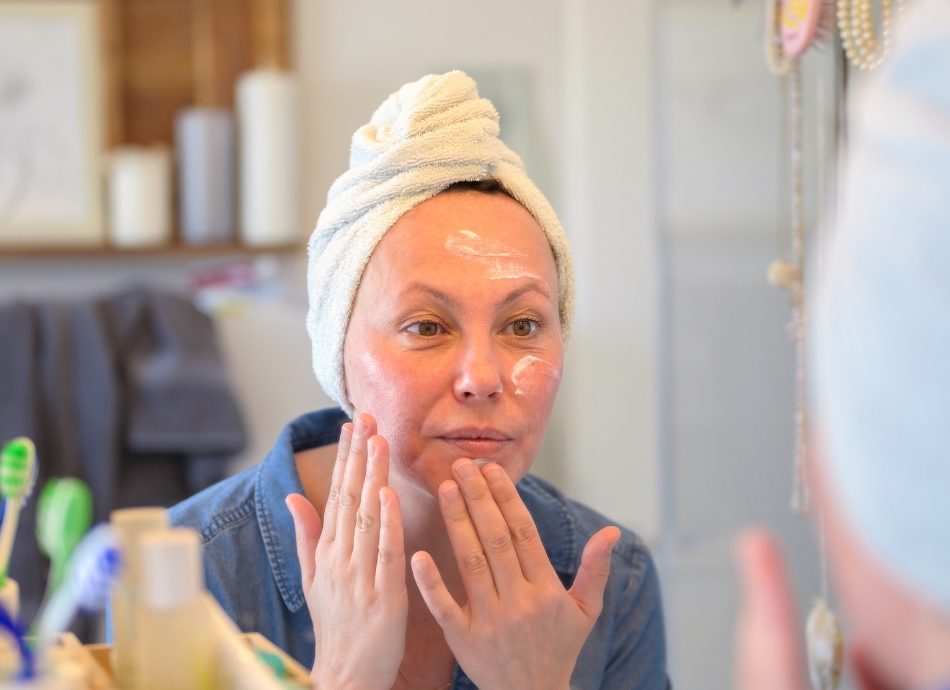Wishing everyone a safe and happy Christmas and New Year – Meri Kirihimete from the Healthify team.
Aqueous cream
Key points about aqueous cream
- Aqueous cream is a non-greasy emollient or moisturiser, used to relieve dry skin conditions such as eczema.
- It helps to retain moisture on your skin and reduce dryness.
- Find out how to use it as a moisturiser and how to use it instead of soap.

Aqueous cream is a non-greasy emollient or moisturiser, used to relieve dry skin conditions such as eczema.
- It's made from a mixture of emulsifying ointment and water (also called oil in water emulsion).
- When it's used as a soap substitute or wash product, aqueous cream works by providing a layer of oil on the surface of the skin. This traps water underneath it and prevents water evaporating from the skin surface. In this way, it helps to retain moisture on the skin and reduce dryness.
- Read more about emollients and moisturisers.
There are 2 main types of aqueous cream
Not all brands of aqueous cream have the same formulation. There are now 2 main types of aqueous cream – one that contains the ingredient called sodium lauryl sulphate (SLS) and one that doesn't contain it, which is labelled as 'SLS-free'.
SLS irritates the skin when it's left on for a long time. This can cause skin reactions, such as burning, stinging, itching and redness. These reactions were noticed when aqueous cream was used as a leave-on emollient but not when used as a soap that is rinsed off.
|
Aqueous cream that contains SLS must be rinsed off after use. Do NOT use it as a leave-on emollient or moisturiser. |
Any aqueous cream that's clearly labelled as SLS-free can be used as both a leave-on emollient and a soap substitute. If you're not sure whether it contains SLS or not, check with your healthcare provider and ask for advice on how to use it.
You can use aqueous cream instead of soap when washing. Soaps (including shower gels and bubble baths) can irritate and dry out your skin. This can make eczema worse.
Although aqueous cream doesn’t lather or foam like regular soap, it cleanses the skin well. It can be used before or during bathing, showering or washing.
|
If your aqueous cream contains sodium lauryl sulphate (SLS), it must be washed off, and not left on your skin for prolonged periods. If your aqueous cream doesn't contain SLS (SLS-free), it can be left on your skin and doesn't need to be washed off. |
Be careful: When using aqueous cream in the bath or shower, the floor can become slippery so use a bath mat or shower mat to avoid accidents. If you are using it on a baby or young child, take extra care so they don’t slip while bathing.
Side effects with aqueous cream are rare.
Some people can get signs of sensitivity or an allergic reaction such as red, itchy skin. This may be confused with a flare-up of eczema or dermatitis. If you’re using aqueous cream as a moisturiser, check it doesn’t contain SLS. If you get these symptoms, tell your doctor or pharmacist.
Emollients and moisturisers (external link) Dermnet NZ
Emollients for eczema(external link) Patient Info, UK
References
- Childhood eczema – improving adherence to treatment basics(external link) BPAC, NZ, 2021
- (external link)Aqueous cream – moisturiser or irritant?(external link) Medsafe, NZ, March 2012
- Emollient and barrier preparations(external link) NZ Formulary
Brochures

Medicines and side effects
Healthify He Puna Waiora, NZ, 2024

Health Quality and Safety Commission, NZ, 2019 English, te reo Māori
Credits: Healthify editorial team. Healthify is brought to you by Health Navigator Charitable Trust.
Reviewed by: Stephanie Yee, Pharmacist, Auckland
Last reviewed:





